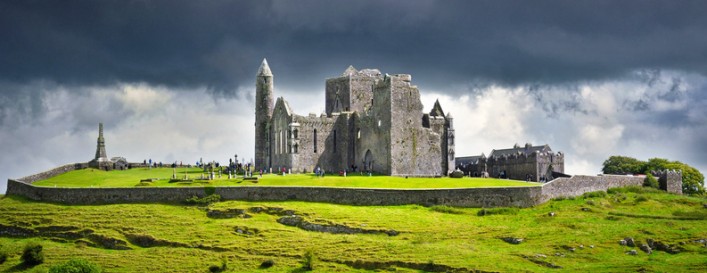Blog Categories
Blog CategoriesFour Stop Tour of Ireland’s Celtic Sites
Cover thousands of years in just a few days with this four stop tour of Ireland’s Celtic sites. From Bru na Boinne to the Hill of Tara, from Tulsk to Cashel.
Bru na Boinne
Bru na Boinne, translates as the ‘mansion’ or the ‘palace’ of the Boyne and is also known as the Bend of the Boyne. It is one of the most important prehistoric landscapes in the world, designated as a World Heritage Site in 1993. About 8km from Drogheda and about 5km east of Slane village, the archaeological wonders include three important passage tombs Knowth, Dowth and Newgrange. They were built approximately 5,000 years ago in the Neolithic age and this was a hugely important place of tradition and ritual for local communities. It is a magical place and one of the most popular tourist locations in Ireland.
 |
| Newgrange |
Hill of Tara
The Hill of Tara was, according to tradition, the seat of the High King of Ireland. Cnoc na Teamhrach near the River Boyne is between Navan and Dunshaughlin. It is an extremely important Celtic site in Ireland and is referenced in texts as far back as the 11th Century. The Hill of Tara is an important site since the late Stone Age when a passage tomb was constructed there. It was a powerful political and religious center in the early centuries and is open to visitors.
Tulsk
Tulsk is a village in County Roscommon and the location for an interpretative center that houses one of the most important and best preserved Celtic Royal sites in Europe. Cruachan was an Iron Age royal palace and the home of the Irish warrior Queen Madb, who is famous for launching the cattle raid of Cooley, which is depicted in one of the best known works in Irish literature the Tain Bo Cuailnge.
Cashel
The Rock of Cashel is one of the most spectacular tourist attractions in Ireland. In County Tipperary, the Rock of Cashel was the traditional seat of the Kings of Munster for hundreds of years before the Norman Invasion. Back in 1101, the King of Munster, Muirchertach Ua Briain, gave the gift of his fortress on the rock to the Church. It is open to visitors and is one of the most remarkable collections of Celtic Art and medieval architecture to be found anywhere in Europe.
 |
| Rock of Cashel |
Visiting any or all of these Irish Celtic sites will undoubtedly start a lifetime journey of discovery in to the extraordinary history of Celtic Ireland.
